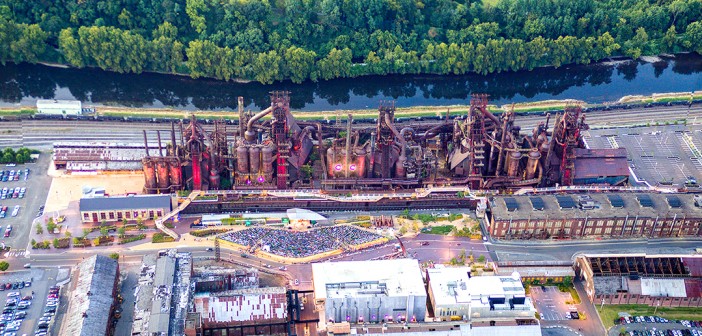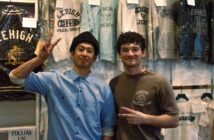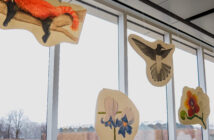As part of a major effort to redevelop the former site of Bethlehem Steel, the Bethlehem Redevelopment Authority opened the Hoover-Mason Trestle, an elevated park and pedestrian walkway that allows the public, for the first time in history, to get up close and personal with the former steel plant.
The Hoover-Mason Trestle was constructed in 1907 and was originally a major artery of Bethlehem Steel as it connected the ore yards to the blast furnaces at the center of the plant, and was used to transport raw materials from the blast furnaces to be made into iron and steel.
Today, after a $15 million renovation, the trestle has been recreated as a walkway which stands 46 feet high, and stretches 2,000 feet long, with entrances at the visitor center and at either end of the Gas Blowing Engine House, connecting the ArtsQuest campus to that of the Sands Casino.
The entire walk features signs which familiarize visitors with the functions of the machines they’re looking at, and chronicles life at the steel plant through quotes and anecdotes from former plant workers.
“It is about physical connection from point A to point B,” said Tony Hanna, ’73, the executive director of the Bethlehem Redevelopment Authority. “But it gives you more than just a physical connection. It gives you a historical, almost spiritual, connection to what took place there over the last 100 years.
“It’s interesting to learn how this little town of Bethlehem had, in its midst, the No. 2 steel maker in the world at the time.”
To put this in perspective, Hanna said the Golden Gate Bridge, the George Washington Bridge, and 80 percent of the New York City skyline are all on the list of structures built with materials from Bethlehem Steel.
With the initial announcement of the trestle’s construction and opening, many thought of the walkway as a mimicry of New York City’s High Line. However, Hanna wants the public to know the trestle is more than that, emphasizing that the park’s steel plant location provides a whole different perspective and the historical connection it provides to the public is what’s most important.
“It’s the historical interpretation that really makes this unique,” he said. “It gives former steel workers the opportunity to take their families on the trestle and talk about their work and what they did.”
Hanna also said since its June 2015 opening, the trestle has been “a tremendous success” with regards to tourism and frequent visitors. He said the park sees constant visitors every day, whether they are there to learn about the history of the plant, take in the views or to simply enjoy the park’s beauty on a walk or run.
“You get up on the trestle and you really get the opportunity to see the connections between the neighborhood, the university, the steel plant, and ultimately a story of the United States,” Hanna said.
Lehigh’s Digital History Project also played a large role in assisting with the creation of the historical interpretation plans.
Julia Maserjian, the project manager and a representative of Lehigh’s South Side Initiative, discussed working with the Bethlehem Heritage Coalition to “plan, implement, and promote historical interpretation along the walkway.”
She said the design of the walkway and the historical context gives visitors a chance to consider Bethlehem from the perspective of the past, present and future.
“There is more to Bethlehem than just Lehigh,” Hanna said. “If you look at the history of Lehigh and the history of Bethlehem Steel, they’re very intertwined. I think that’s something that gets lost in students as you get further and further away.”
Hanna also discussed his hopes that Lehigh students would come out to the trestle and engage more with the community.
“It’s cool to see what my town actually came from and why it’s a big deal to have such a factory here, and I think that’s important for Lehigh students as well to see the history of the area they came to go to school,” Emilee Strange, ’17, a lifelong Bethlehem resident said. “It really allows people to see the history of the town they are entering and the beauty of a place that people like me grew up in.”
The trestle is open to the public from 8 a.m. to 8 p.m. Sunday through Wednesday and 8 a.m. to 9 p.m. Thursday through Saturday.






Comment policy
Comments posted to The Brown and White website are reviewed by a moderator before being approved. Incendiary speech or harassing language, including comments targeted at individuals, may be deemed unacceptable and not published. Spam and other soliciting will also be declined.
The Brown and White also reserves the right to not publish entirely anonymous comments.